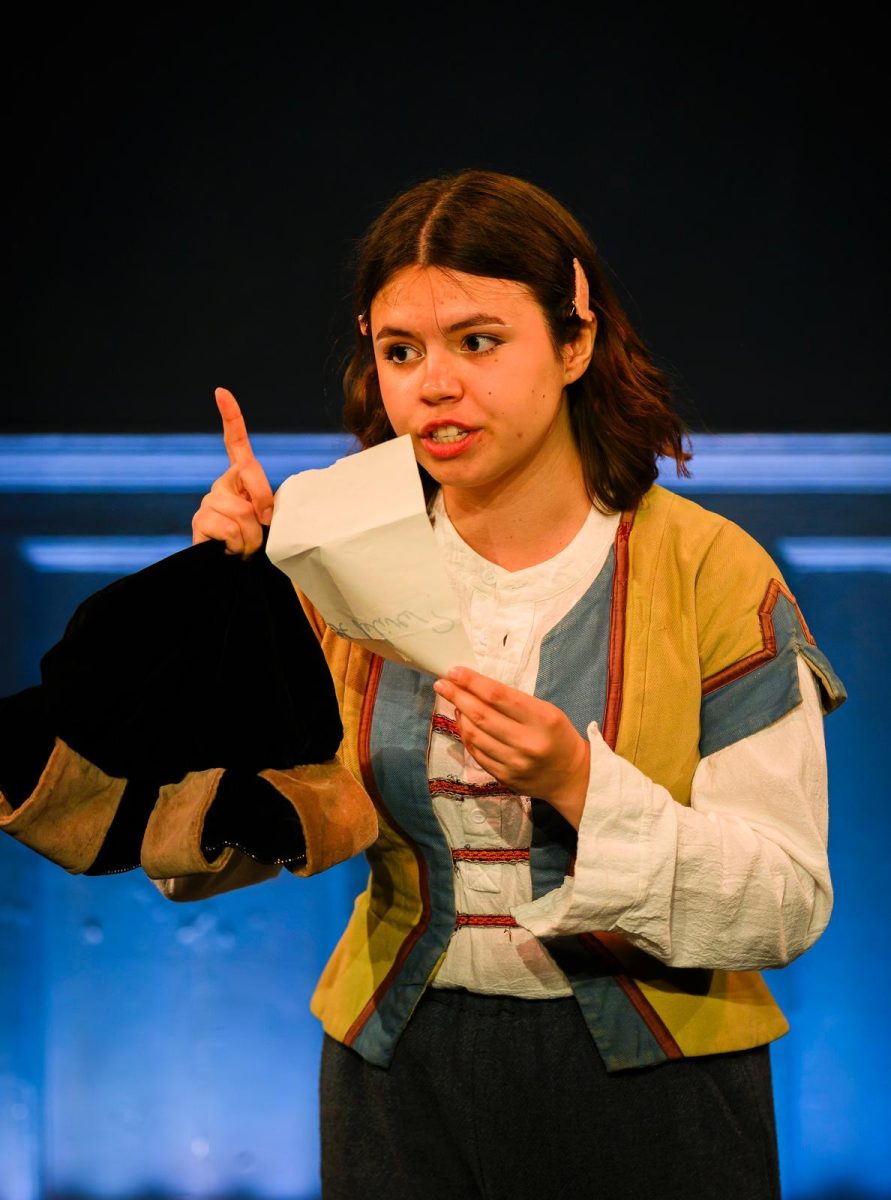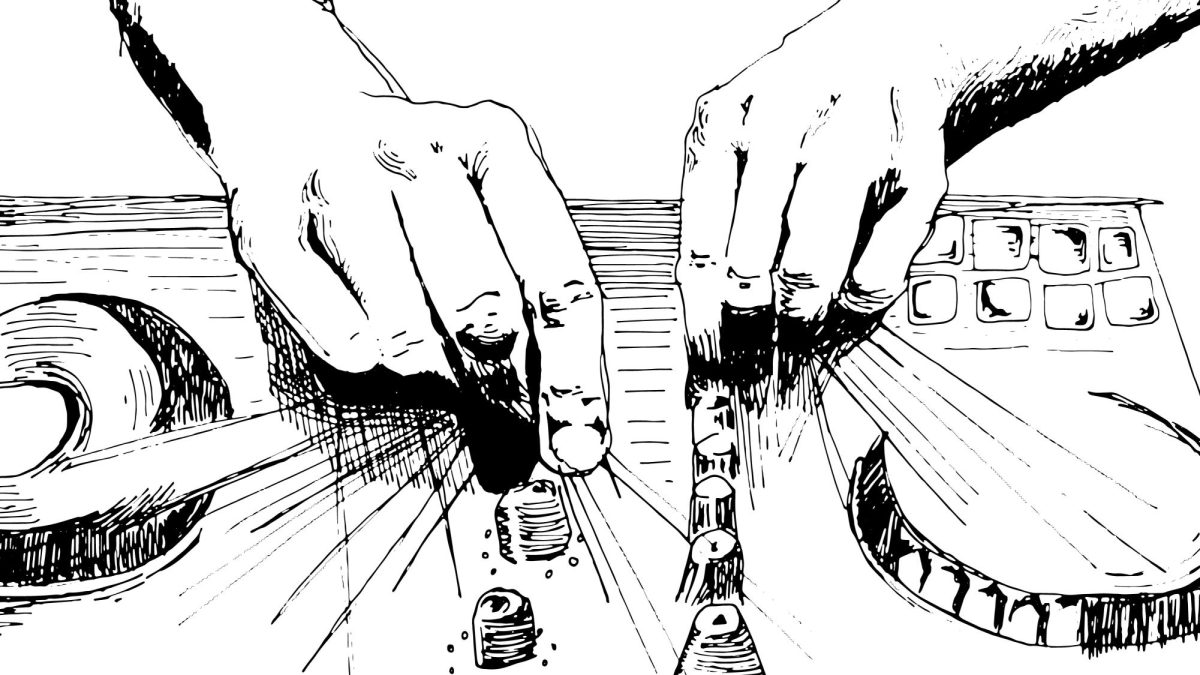Along the Green River resides an 18th-century mill outpost building, reimagined by Laurel Brown and Izzy Lee ’12 as the North Loop Gallery, a seasonal gallery open from June to November with a slate of exhibitions seeking to foster conversation between local and national artists. The latest exhibition, on view through Nov. 12, pairs the interdisciplinary work of Pallavi Sen, an assistant professor of studio art at the College, with the sculptural practices of two artists from across the country, Abby Flanagan and Mariko Makino.
Walk into North Loop Gallery, past the cheerful flower pots in the front, over the creaky floorboards of the entrance, and you’ll find yourself in the colorful world of Sen’s watercolors, monotypes, frescoes, and glass sculptures.
A self-described “dabbler in many things,” Sen explores a myriad of mediums with varying levels of temporal and physical labor. She creates frescoes on lime plaster, a time-constrained process limited to painting while the plaster is wet, and monotypes, which require the quick application of paint onto glass that is pressed onto paper before it dries. Both of these relatively intuitive and spontaneous mediums contrast with her painstakingly detailed watercolors that require profound concentration and a slow build-up of many precise layers.
The watercolors Semillas and Abuela Bendice El Maíz, painted in January 2023, served as a half-draft — or “imagination,” as Sen describes it — of the garden installation that she designed and grew for the Clark Art Institute’s “Human Ecology: Eight Positions” exhibit. Take a walk from North Loop to the Clark, and you will notice a variety of repeated motifs from these works in the construction of the garden. The repetition — while not necessarily intentional — illustrates how the forms in which she was interested in January have subconsciously carried over several months later.
“It requires a lot of imagination to make a garden and some foresight about the many possibilities in a season,” Sen said. “Painting this was recording the process of using that imagination to build something now based on what it might be six, seven, eight months from now.”
The act of visualizing on paper what can be conceieved into three dimensions is a common theme in Sen’s work. Her watercolor After Carl Klewicke, inspired by Carl Klewicke’s silk quilt in the American Folk Art Museum, takes his craft and reimagines it as how she would have designed a quilt. The original is made of a patchwork of tiny silk scraps sewn together over several years; Sen’s was painted over the process of several weeks. Though experienced in a breadth of mediums, Sen’s interdisciplinary practice is limited by the time and labor it takes to learn each skill, so painting serves as a way of imitating a medium the best she can.
“I wish I could have an extremely long life where I could learn many, many, many things and be masterful at them, but I know that it’s maybe not possible because each of the things I love requires decades of practice,” Sen said. “So painting becomes like a shortcut of coming close to the kind of technique I love or the thing I love, but unique to this method that is a lot less laborious.”
In the corner of the exhibition room, as the girl depicted in By Night slumbers away in a bedroom surrounded by rich patterns and swirls, an upward-looking eye, a pair of shoes at the foot of the bed, the line of what she dreams and what is real gets blurred. Is she dreaming, or is she creating? It’s hard not to think of this as a grounding metaphor for Sen’s exhibition — perhaps the act of visualizing is itself an act of creation. In a way, Sen is the sleeping girl, dreaming up colorful creations that decorate her room and overflow into the exhibition space.
In the next room over at the gallery, the work of Flanagan and Makino share one space and similar themes, but very different mediums. According to Brown, their work, like Sen’s, deeply considers our relationship to the natural world and natural materials.
Flanagan’s tract series uses found materials like sawdust, charcoal, leaves, and wool to fill polycarbonate panels, creating patterns and shapes evocative of textile punch cards and spectrograms of wood thrushes’ calls. A New England native, she sought to root her work in materials and concepts representative of the region and her childhood in Maine. A fiddle player as well as visual artist, her pieces can invoke the auditory senses as well as the visual.
“We installed the pieces spread around the room in a way that we felt helped draw your attention to the movement across the pieces: how they look together and how they can fill space, and how they feel like a score together,” Brown said.
Makino’s light sculptures use hand-carved heart pine and glowing bent glass tubes to depict natural landscapes. The shape of her wall sculptures, Tame and Pin, are vertically flipped forms from landscape photos she took of river meeting sky.
“There’s a conversation between the two different components on either side, which I think comes from that flipping of the water and skyline meeting,” Brown said. “What’s reflection, and what’s the initial object?”
Made from sand, formed in fire, blown with air or shaped with metal, and evocative of water, glassblowing is perhaps one of the most elemental art forms. The neon glow emitting from Makino’s glass tubes beautifully contradicts this emphasis on natural materials, putting the artificial in conversation with the natural. Next to the heart pine — its grain bringing to mind the topographical lines of a map — the effect is a distinct contrast of man-made and natural materials, all overseen and shaped by the human hand.
Inspired by tree bracing systems that direct tree growth, the wood and glass are bound together by only a delicate string. The thread that binds conjures a reminder of our tepid balance with nature, capable of snapping and shattering at any moment. Yet, like the man-made tree bracing systems that harness nature’s power, there is also unexpected strength.
The question that “Light Trail” brings to mind is of human labor mixed with the natural environment. As you turn your gaze upwards, the classic white-washed gallery walls give way not to sky, but to exposed wooden beams that still bear evidence of their laborious creation, harkening back to the age of the craftsman. Today, our clothes are polyester, our tables are veneered, our food contains microplastics. Mechanization defines our surroundings. In a time where we feel alienated from the earth and each other, this exhibit pushes us to question our age of artifice and reconnect with our roots.








